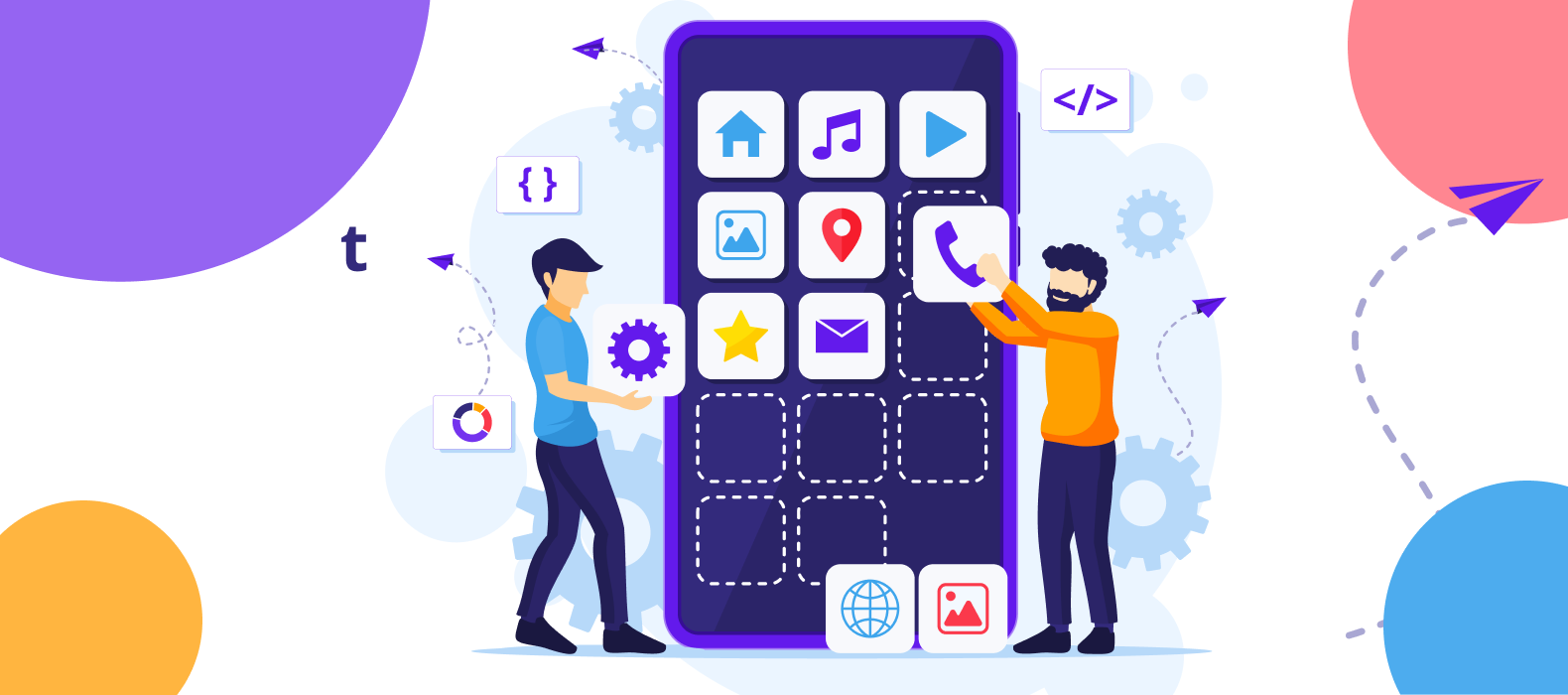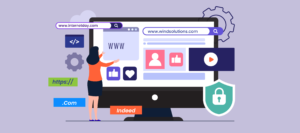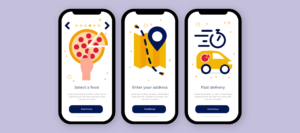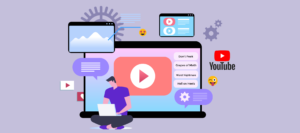What is an Android Based Applications? 10 Best Types of Android Applications
It’s no secret that the world has become mobile. We live in an era where our smartphones are always within arm’s reach, day or night. What are people doing on those devices? Making use of mobile apps. The potential applications for mobile apps seem to be limitless.
How many android based applications do you have installed on your phone? Have you noticed any of it? Every day, a new feature is added. Every moment, businesses gain a larger customer base. Numerous expectations from an endless stream of users. This reflects the industry’s breakneck pace of evolution in mobile app development. A look at the data below will confirm this.
According to Statista’s Digital Market Outlook, revenue across most segments will rise over the next few years, reaching around 613 billion US dollars by 2025.
Google Play and the Apple App Store have 6.63 million apps. How would you ensure that your app is noticed? The truth is that you can’t unless you keep up with the latest mobile app development trends and understand how to use them to create robust, feature-rich apps. To thrive in this digital era, you must become familiar with changing mobile app development trends.
If Anyone planning to develop a mobile app for their company will inevitably have to answer these questions: “What kind of app should I build?” or “How much does developing an app cost?”
Let’s look for the answers now.
What is an Android Based Application?
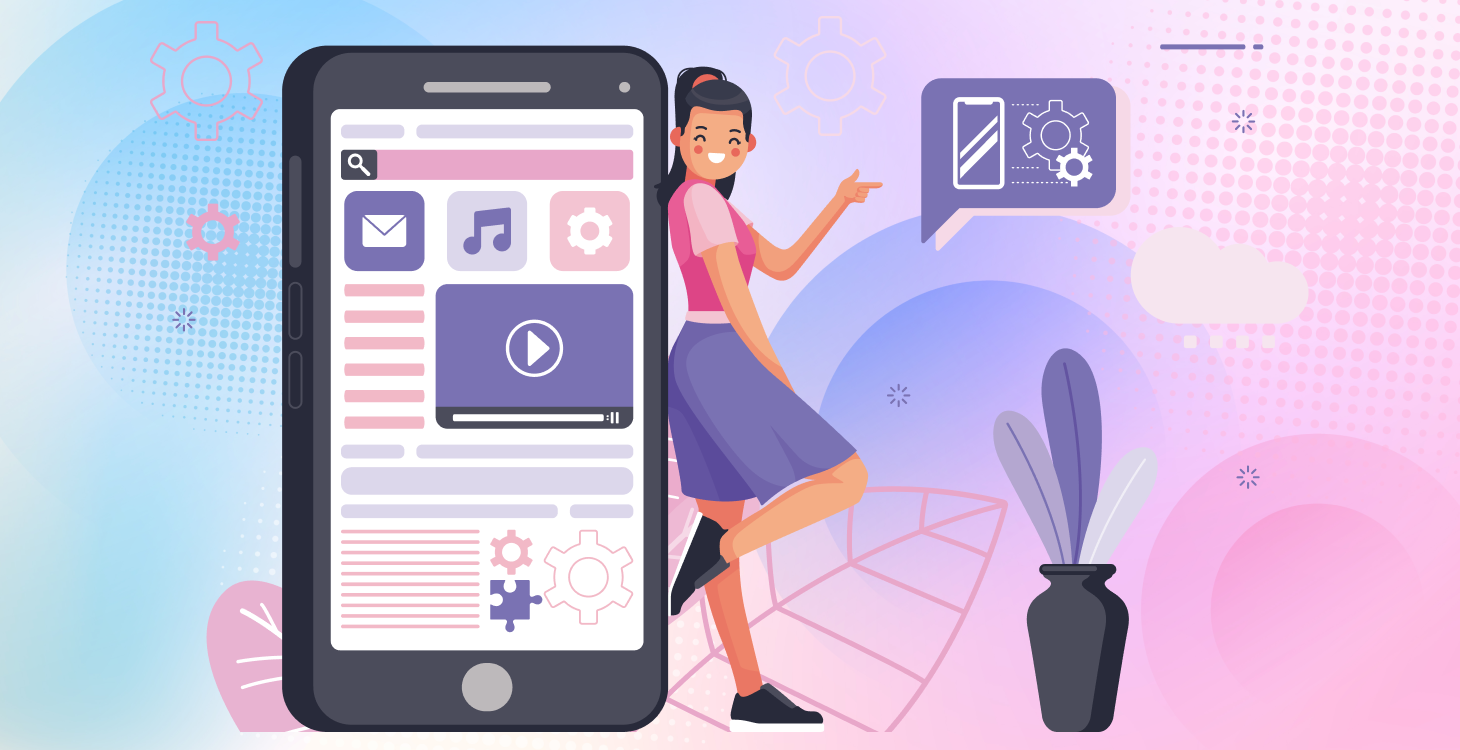
An Android based application designed to run on the Android operating system, used in smartphones, tablets, smartwatches, and other mobile devices. Android is an open-source operating system developed by Google, meaning developers can freely access its source code, modify it, and create Android based applications.
The applications are developed using Java, Kotlin, or other programming languages and are typically distributed through the Google Play Store or other app stores. Android applications can be designed to perform a wide range of functions, including social networking, gaming, productivity, communication, and entertainment.
However, it typically has access to a wide range of device features, such as a camera, GPS, accelerometer, and microphone, allowing it to offer advanced functionality and a more engaging user experience. Android also provides a rich set of development tools and frameworks, such as Android Studio, that make it easier for developers to create high-quality and robust applications.
Types of Android Applications
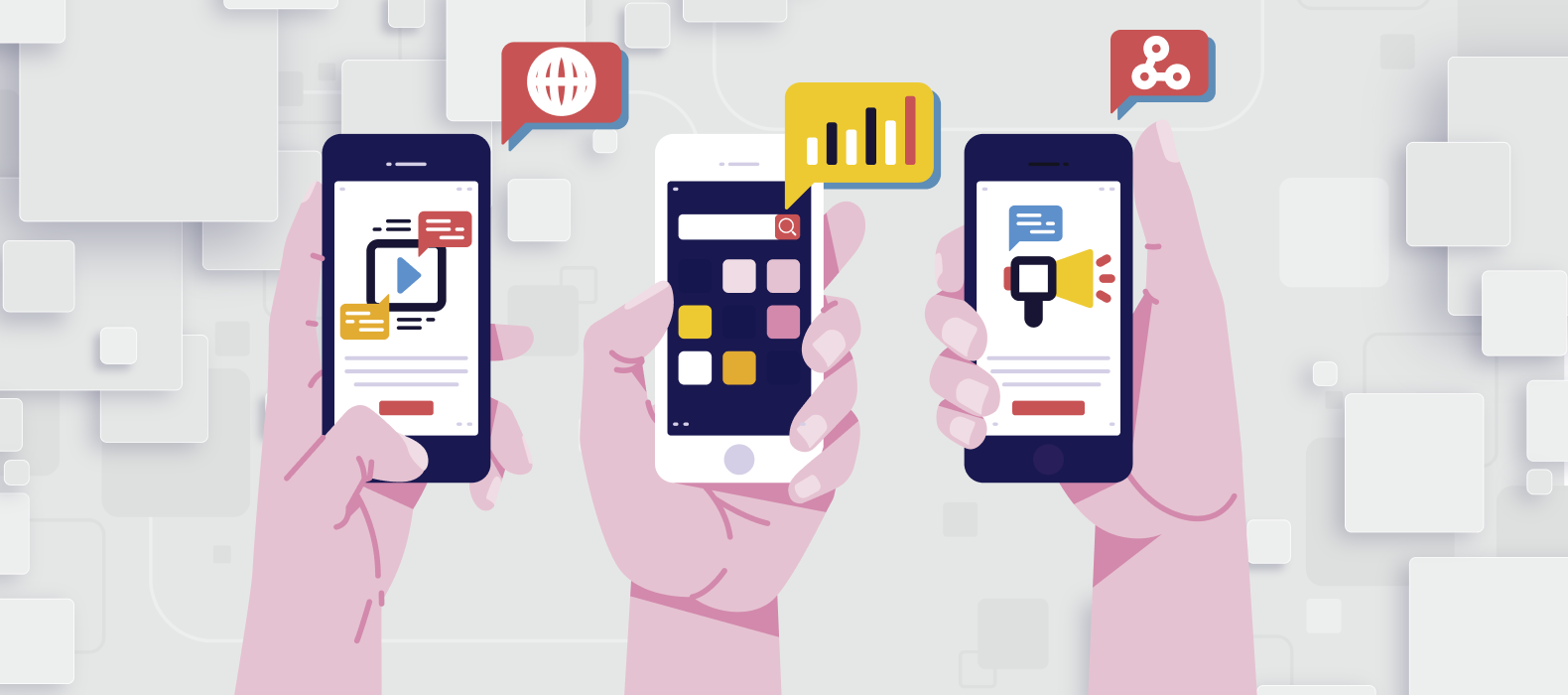
Mobile apps are divided into several categories. According to the characteristics of their programming, the three kinds of internet applications—a hybrid, native, and mobile—can be found. Using excellent examples from a cross-platform app development company, let’s examine these mobile apps more closely.
1. Native Applications:
Native Android based applications are mobile apps developed specifically for the Android operating system using the Android Software Development Kit (SDK) and programming languages such as Java, Kotlin, or C++.
The advantage of being optimized for the Android platform is providing a smoother and faster user experience. They also have access to all the features and functionalities of the device, including the camera, GPS, accelerometer, and other sensors. This level of access allows for more advanced functionality and integration with the hardware.
However, developing native Android apps can be more expensive and time-consuming than other app development approaches, requiring expertise in the Android platform and its programming languages. It also means that the app is only compatible with Android devices and cannot be used on other platforms such as iOS or Windows.
- Pros: High performance, access to full Android API and features, and ability to provide a seamless user experience.
- Cons: High development costs, time-consuming development process, and the need for specialized skills and expertise.
- Example: WhatsApp, Instagram, Google Maps
- Estimated Cost: Native applications are developed specifically for the Android operating system and can take advantage of its features and functionality. The cost of developing a native Android based application can range from $10,000 to $100,000, depending on the complexity of the application.
2. Hybrid Applications:
Hybrid applications are a type of mobile application that combines elements of both native and web applications. They are built using web technologies like HTML, CSS, and JavaScript and then wrapped in a native application using frameworks such as PhoneGap or React Native.
The applications can access device features like the camera, GPS, and contacts, making them more powerful than traditional web applications. They also have a native-like user interface, providing a better user experience than a purely web-based application.
- Pros: Faster development time, lower development costs, ability to use web technologies like HTML, CSS, and JavaScript, and ability to be deployed across multiple platforms.
- Cons: Lower performance and responsiveness compared to native applications, limitations in accessing device features and APIs, and potential compatibility issues across different devices.
- Example: Twitter, Uber, Instagram Lite
- Estimated cost: Hybrid applications are developed using web technologies and can run on Android and iOS devices. Developing a hybrid Android based application can range from $15,000 to $50,000.
3. Web Applications:
Web applications are software programs accessed over the internet using a web browser. They can be as simple as a single page or as complex as a multi-page application that performs various functions.
Applications are built using web technologies like HTML, CSS, and JavaScript and are typically hosted on a web server. Users can access the application by entering its URL into their web browser.
One of the main advantages of web applications is that they are platform-independent, meaning they can be accessed from any device with a web browser and an internet connection. They also can scale quickly and easily, as they can be hosted on cloud-based servers.
- Pros: No need to install the application, ability to access the application from any device with an internet connection, and lower development costs compared to native and hybrid applications.
- Cons: Limited access to device features and APIs, potential security concerns, and user experience and interface limitations.
- Examples: Google Drive, Dropbox, Trello
- Estimated Cost: Web applications are accessed through a web browser and do not require installation on the user’s device. Developing a web application can range from $10,000 to $50,000.
4. Progressive Web Applications:
Progressive Web Applications (PWA) are web applications that use modern web technologies to provide a native app-like experience to users, even when the application is accessed through a web browser. PWAs are designed to be fast, reliable, and engaging, with features like push notifications, offline support, and the ability to install on a user’s device like a native app.
PWAs use technologies like service workers, which allow the application to work offline and cache data for improved performance. They also use web app manifests, which provide metadata about the application, allowing it to be installed on a user’s device like a native app.
- Pros: Ability to provide an app-like experience with features such as offline access, push notifications, and full-screen mode, lower development costs compared to native applications, and ability to be deployed across multiple platforms.
- Cons: Limited access to device features and APIs, user experience and interface limitations, and potential compatibility issues across different devices.
- Examples: Twitter Lite, Flipkart Lite, Trivago
- Estimated Cost: Progressive web applications are similar to web applications but offer additional features such as offline access and push notifications. Developing a progressive web application can range from $15,000 to $60,000.
5. Augmented Reality Applications:
Augmented Reality (AR) applications are software programs that use computer-generated images or graphics to enhance a user’s real-world experience. AR applications typically use a camera or other sensor to capture the user’s environment and overlay digital information onto the real-world view.
Applications can be used for various purposes, such as gaming, education, retail, advertising, and more. They can provide users with interactive experiences that are both informative and engaging and can be accessed through a variety of devices, including smartphones, tablets, and wearables.
- Pros: Ability to provide enhanced user experiences, the potential for education and training, and the ability to create new and innovative experiences.
- Cons: Limited user base due to the need for specialized hardware, high development costs, and limitations in the quality of the user experience.
- Examples: Pokemon Go, IKEA Place, Snapchat Lenses
- Estimated Cost: Augmented reality applications use technology to overlay digital objects onto the real world. Developing an augmented reality Android based application can range from $20,000 to $150,000.
6. Virtual Reality Applications:
Virtual Reality (VR) applications are software programs that use computer-generated graphics to create a simulated environment that users can interact with. They typically require a headset or other device that provides a fully immersive experience, blocking out the user’s view of the real world.
The applications can be used for various purposes, such as gaming, education, training, healthcare, and more. They provide users with a fully immersive experience that can be tailored to specific needs and preferences and can be used to simulate various scenarios and environments.
- Pros: Ability to provide immersive experiences, the potential for education and training, and the ability to create new and innovative experiences.
- Cons: Limited user base due to the need for specialized hardware, high development costs, and limitations in the quality of the user experience.
- Examples: Google Cardboard, YouTube VR, BBC Earth: Life in VR
- Estimated Cost: Virtual reality applications use technology to create a simulated environment. Developing a virtual reality Android based application can range from $50,000 to $500,000.
7. Gaming Applications:
Gaming applications are software programs that provide users with an interactive and engaging gaming experience. They can be played on various devices, including desktop computers, laptops, mobile devices, and gaming consoles.
Applications can take many forms, including action games, role-playing games, simulation games, puzzle games, and more. Typically, a combination of graphics, sound, and user input creates an immersive gaming experience that challenges and entertains users.
- Pros: Ability to provide immersive experiences, the potential for monetization through in-app purchases or advertising, and the ability to engage a large user base.
- Cons: High development costs, intense competition in the market, and potential limitations in device compatibility.
- Examples: Candy Crush, PUBG Mobile, Among Us
- Estimated Cost: The cost of developing gaming Android based applications can range from $10,000 to $250,000 or more, depending on the game’s complexity, the type of graphics and animation required, and the level of interactivity.
8. Social Media Applications:
Social media applications are software programs that allow users to create, share, and interact with content on social networks. They typically include features like profiles, news feeds, messaging, commenting, and sharing.
The applications can be used for various purposes, such as connecting with friends and family, networking with colleagues, sharing information and ideas, promoting businesses and brands, and more. They have become an integral part of modern communication and have fundamentally changed how people interact with each other and the world.
- Pros: The ability to connect people and build communities, the potential for monetization through advertising, and the ability to engage a large user base.
- Cons: Potential security and privacy concerns, potentially negative effects on mental health and well-being, and intense competition in the market.
- Examples: Facebook, Instagram, Twitter
- Estimated Cost: The cost of developing social media Android based applications can range from $20,000 to $100,000, depending on the required features.
9. Educational Applications:
Educational applications are software programs designed to enhance the learning experience by providing educational content, interactive activities, and personalized learning pathways. They can be used in various settings, such as schools, universities, and online learning platforms.
Applications use various technologies to provide an interactive and engaging learning experience, including multimedia content, gamification, and adaptive learning algorithms. They also often incorporate social features, such as discussion forums and collaborative learning tools, to promote student interaction and engagement.
- Pros: Ability to provide education and training to a large audience, potential for personalized learning experiences, and the ability to improve access to education.
- Cons: Potential limitations in device compatibility, the potential for limited engagement and retention, and challenges in developing high-quality content.
- Examples: Duolingo, Khan Academy, Coursera
- Estimated Cost: The cost of developing educational Android applications can range from $10,000 to $50,000 or more, depending on the complexity of the application and the level of interactivity required.
10. Productivity Applications:
Productivity applications are software programs designed to help individuals and organizations be more efficient and effective. These applications can include a wide range of features, such as time management, project management, communication, and document editing tools.
They can be used in various settings, including offices, schools, and homes, and can be accessed through various devices, such as desktop computers, laptops, smartphones, and tablets.
- Pros: Ability to improve efficiency and organization, the potential for monetization through subscriptions or in-app purchases, and the ability to improve work-life balance.
- Cons: Potential security and privacy concerns, potential for limited user engagement and retention, and intense competition in the market.
- Examples: Google Drive, Microsoft Office, Trello
- Estimated Cost: The cost of developing productivity Android based applications can range from $10,000 to $50,000 or more, depending on the complexity of the application and the features required.
Difference Between Native, Web and Hybrid Apps
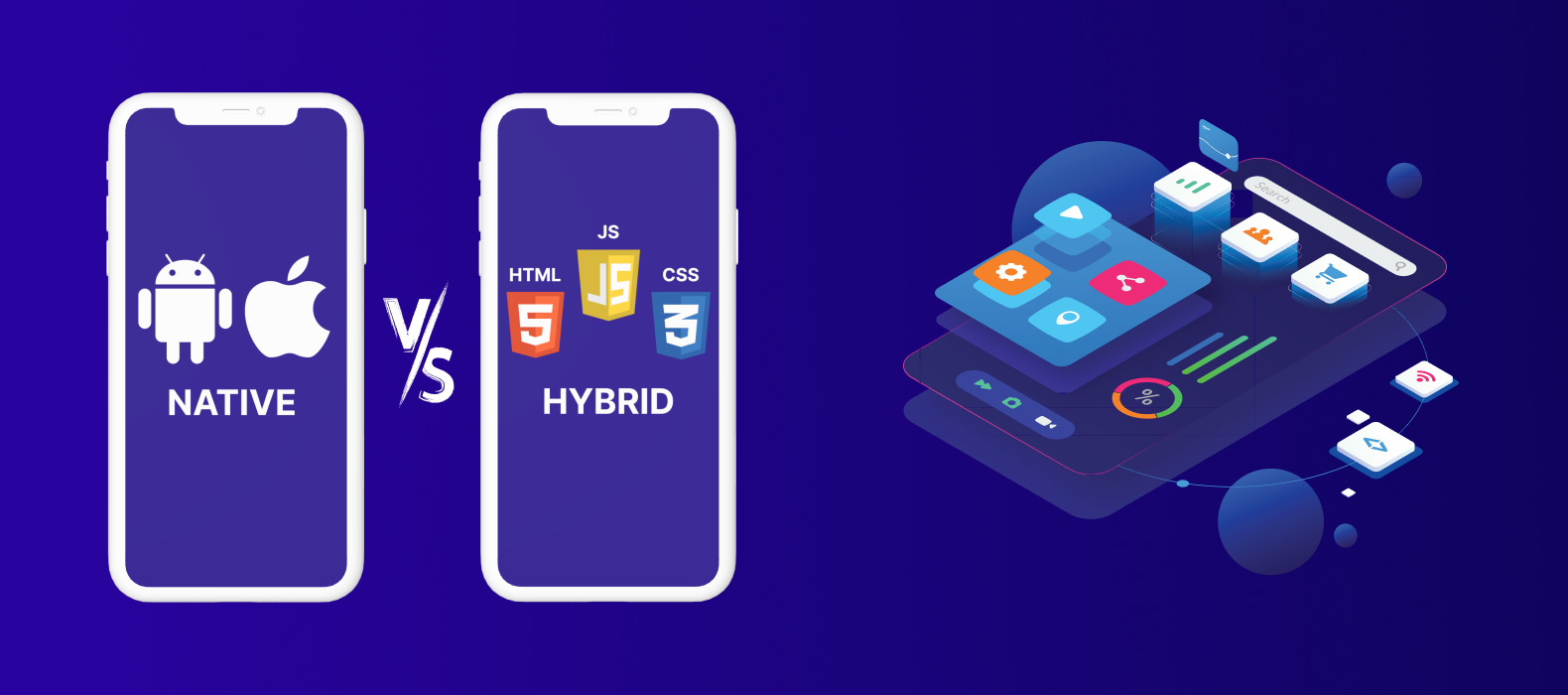
| Aspect | Native Apps | Web Apps | Hybrid Apps |
| Programming Languages | Use native language (Java, Kotlin) | Uses web technologies (HTML, CSS, JavaScript) | Uses a combination of native and web technologies |
| User experience | Provides high-quality native user experience | Limited to web browser user interface | Can provide a native-like user experience |
| Performance | Provides high performance | Limited by browser performance | Can provide good performance with native components |
| Access to device APIs | Full access | Limited access | Full or limited access |
| Offline availability | Can work offline | Limited offline functionality | Can work offline |
| Development cost | High | Low | Moderate |
| User acquisition | Requires app store | Can be accessed from a URL | Requires app store |
Conclusion
In conclusion, an Android based application is designed to run on the Android operating system. The applications can be developed using various programming languages such as Java, Kotlin, and C++. There are several Android applications, including native applications, hybrid applications, web applications, progressive web applications, virtual reality applications, and augmented reality applications. Each application type has its advantages and disadvantages, and developers must carefully consider these factors when choosing which type to develop. Overall, Android applications have become an integral part of our daily lives, and the demand for innovative and user-friendly applications continues to grow.
FAQs
Question 1: What is an Android Based Application?
An Android based application is a software program that runs on the Android operating system. It can be downloaded and installed on Android devices, such as smartphones, tablets, and smartwatches.
Question 2: What are the types of Android Applications?
There are several types of Android applications, including:
- Native Android applications
- Hybrid Android applications
- Web-based Android applications
- Game Android applications
- Augmented Reality and Virtual Reality Android applications
Question 3: What are some popular Android based applications?
Some popular Android based applications include:
- Social media apps like Facebook, Instagram, and Twitter
- Messaging apps like WhatsApp, Telegram, and Signal
- Entertainment apps like Netflix, YouTube, and Spotify
- Productivity apps like Google Drive, Microsoft Office, and Trello
- Gaming apps like Candy Crush, PUBG Mobile, and Among Us
Question 4: What are the Advantages of Developing Android Based Applications?
Some advantages of developing Android based applications include the following:
- Large market share
- Open source
- Customization
- Google Play Store
Question 5: What are the Skills Required to Develop Android Based Applications?
Some skills required to develop Android based applications include
- Knowledge of programming languages like Java or Kotlin
- Familiarity with the Android SDK and development tools like Android Studio
- Experience with UI/UX design and development
- Understanding of database management and server-side programming
- Knowledge of mobile app security and best practices.

